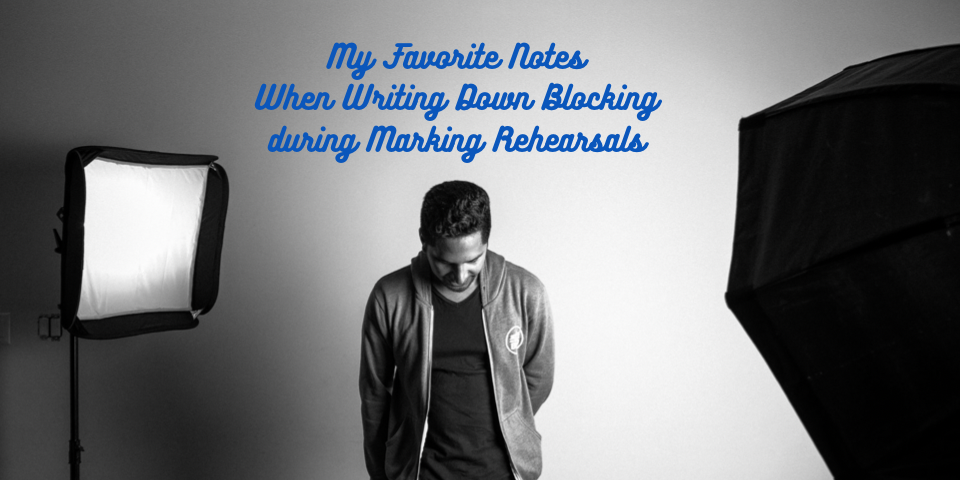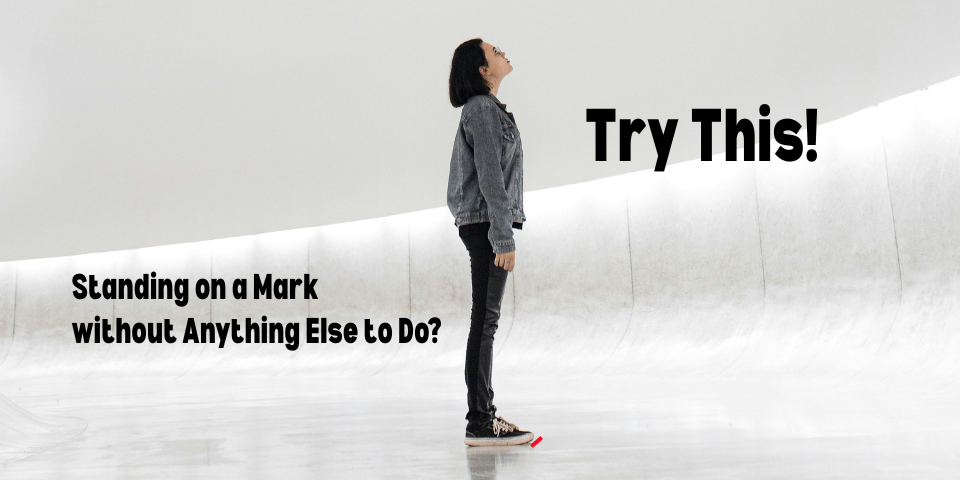Let’s face it. When you’re working as a stand-in in TV or film, you usually only get one shot to learn the blocking for your actor before you’re expected to do it.
It is during these “marking rehearsals” that you typically first get to see your actor’s blocking. Sometimes a scene is just your actor talking in place with another actor. Piece of cake. Looks as if you’ll just stand on one mark for this scene.
Other times, though, a scene is a mad scramble of detailed movements your actor does coordinated with other actors in a scene. Eek!!
When you’re a stand-in watching the marking rehearsal for a more complicated scene, it’s quite a challenge to take proper notes. You might be trying a mix of approaches to document the scene’s blocking. doing a map of characters and their positions, writing notes in the margin next to lines, drawing the body positions of the actors, all three of these techniques together, or some other technique altogether.
I’ve worked as a stand-in for over a decade and seen probably thousands of marking rehearsals in that time. Here are some of the notes I take to help capture key things I observe in a marking rehearsal.
cl / ccl
When an actor turns around or pivots in a scene, it is usually important for a stand-in to know in what direction that actor turned.
In other words, did the actor turn clockwise, or counterclockwise (anticlockwise)?
During a marking rehearsal, if I see an actor turn, I usually jot down a note that the turn the actor did was “cl” for clockwise, or “ccl” for counterclockwise.
rh / lh
Actors pick up objects in scenes, grab door handles, or do one thing or other with their right hand or with their left hand.
While watching a marking rehearsal, I try to keep track of which hand an actor used when handling a prop or opening a door. I usually jot down a note that the object was in the “rh” for right hand or “lh” for left hand.
If I observe an actor handling a prop, often I will also briefly make a fist with my own hand of the hand the actor used. This will give me a bit of “muscle memory” when it comes to writing down the note in a busy scene and when it comes to later in case I’m separated from my notes.
ent
Of course, sometimes an actor enters a scene.
When an actor enters a scene, I might write “ent” for an actor. This note might especially be helpful when stand-ins need to know the timing of exactly on what word in the dialogue the actor enters.
Circling the word or phrase in the dialogue and writing “ent” will help show when you should enter the scene in a second-team rehearsal.
Stick Figures for Body Positions
If an actor is sitting, standing, or lying down in a way that might be of interest on camera, then I might do a quick sketch of the actor’s body position for remembering later.
I tend to do this when an actor has legs crossed or arms folded. A quick sketch will help me remember which leg is on top or which arm is underneath.
Stick figures can also help in representing when an actor is sitting up in a chair versus leaning, or when an actor is lying down on the side with an arm propping up the head, or really whenever. Images of body positions may help you remember them better than writing them down in words would help.
What about You?
You’ve likely come up with some tricks you’ve evolved for writing down blocking. In the end, what matters is whether what you wrote down makes sense to you and lets you accurately perform your actor’s blocking.
Are any of these tips helpful for documenting your actor’s blocking in a scene? What techniques do you employ? Share your perspectives in the comments below!







Leave A Comment